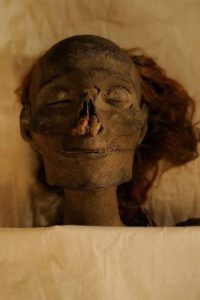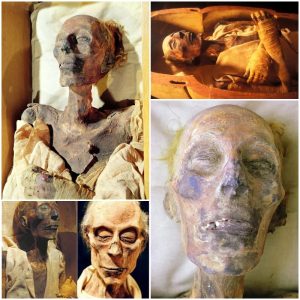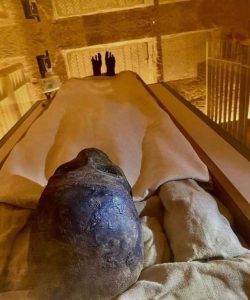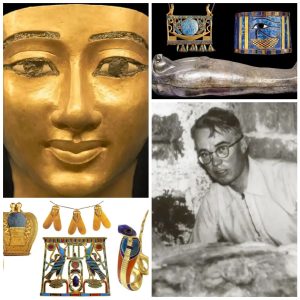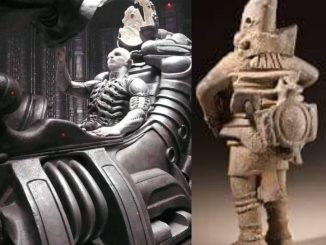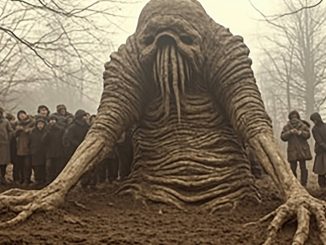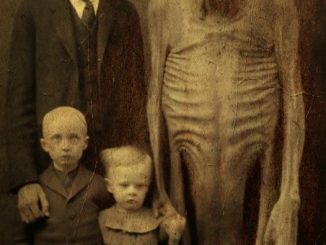From an examination of Seti’s extremely well-preserved mummy, Seti I appears to have been less than forty years old when he died unexpectedly. The reasons for his relatively early death are uncertain, but there is no evidence of violence on his mummy.

The mummy of Seti I was found in a well-preserved state, wrapped in linen bandages and placed within a series of nested coffins. The mummy was adorned with various funerary amulets and jewelry, reflecting the beliefs and rituals associated with the afterlife in ancient Egyptian culture.
An X-ray scan reveals that the left side of his chest was stuffed with hard black masses of resin-impregnated linen and the king still wears an amulet on his left arm. The mummy’s skin was brown when it was first uncovered in 1886.
The huge alabaster sarcophagus of Set I, carved in one piece and intricately decorated on every surface (including the goddess Nut on the interior base), is in Sir John Soane‘s Museum.
Achievements of King Seti I
Seti I, also known as Seti I the Great is known for several notable achievements during his reign.
Military Campaigns
Seti I conducted military campaigns to secure Egypt’s borders and expand its territory. He successfully led expeditions into Canaan, Nubia, and Libya, asserting Egyptian dominance in these regions.
Temple Construction
Seti I was a prolific builder and commissioned the construction of several grand temples. The most famous of these is the Temple of Karnak in Thebes, where he added significant structures and decorations.
Restoration of Monuments
Seti I took great interest in restoring and preserving ancient monuments and temples that had fallen into disrepair. He initiated restoration projects in various locations, including the Sphinx and the temples of Luxor and Abydos.
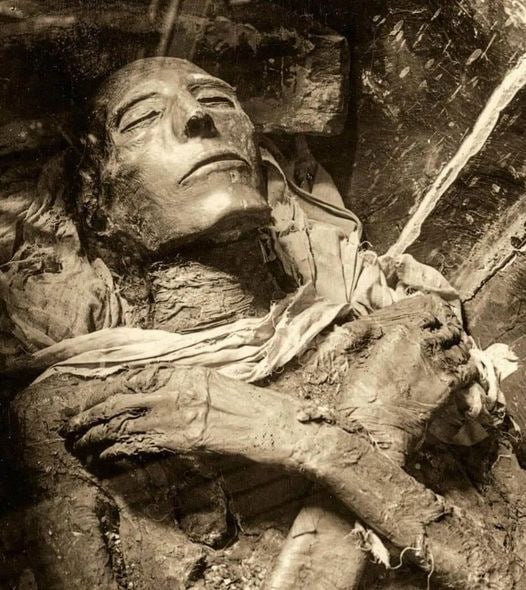
Art and Architecture
Seti I’s reign witnessed a flourishing of artistic and architectural achievements. He patronized skilled artisans and craftsmen, resulting in the creation of intricate reliefs, statues, and architectural marvels.
Family Legacy
Seti I was the father of the renowned king Ramesses II (Ramesses the Great). His reign laid the foundation for the prosperous and influential reign of his son, who would go on to become one of Egypt’s most celebrated kings.
These are just a few of the notable achievements associated with Seti I’s reign, highlighting his military successes, architectural contributions, and cultural impact during the New Kingdom period of ancient Egypt.
The discovery of Seti I’s mummy provided valuable insights into the burial practices and religious beliefs of the New Kingdom period. It has been a subject of study and analysis by Egyptologists and researchers to learn more about the life, death, and funerary practices of this prominent king.
New Kingdom, 19th Dynasty, reign of Seti I, ca. 1290-1279 BC. Now in the National Museum of Egyptian Civilization (NMEC), Cairo. JE 26213
READ MORE:
An exceptionally well-preserved mummy discovered more than 100 years ago and housed in Turin’s Egyptian Museum since 1901.This skull, wearing medieval chainmail, was discovered in a mass grave on the Island of Gotland, Sweden.
“Ginger,” one of the oldest existing Egyptian mummies, dates back over 5500 years.


